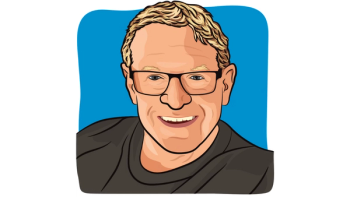
Cancer Times 2: Synchronous But Surviving
The way I see it, double the cancer diagnoses means double the victory.
On April 13, 2022, I received the news: the February biopsy had indicated uterine cancer. Although my gynecologist was extremely gentle as she spoke, her words coaxed tears from me while I desperately tried to maintain my composure.
Once I recovered from the absolute shock, I prepared myself for an unexpected ordeal against the unknown. I met a wonderful young Black man who would be my trusted oncologist; he recommended a course of treatment that would start with staging my uterine cancer via a total hysterectomy in May. I quickly agreed and was relieved when I easily recovered from the laparoscopic procedure. I awaited the pathologist’s report at my early-June consult with the doctor.
I came prepared with three pages of typewritten questions to ask him, but was totally unprepared for his account of the surgical results. He informed me that I indeed had uterine cancer and it was staged as 1A. Unfortunately, I had the uterine serous variety — rare, extremely aggressive and highly fatal to Black women. But, as the cancer was early in its progression, my chances of survival were not bad.
My oncologist also reported that during the hysterectomy, he spied an abnormality in my cervix: a large, malignant mass which was removed and later staged as 3B. No Pap smear had ever detected it, and I had never exhibited any symptoms.
The oncologist informed me that the uterine and cervical cancers were not related. They were neither a result of metastasis nor recurrence. Indeed, I am that unusual patient whose two cancers were identified almost simultaneously. In my head, a snarky voice said, “Oh, great. Two chances to die. Aren’t I the lucky one?!”
Since that distressful summer, I have undergone external beam radiation with low-dosechemotherapy, brachytherapy and six rounds of chemotherapy with two drugs. On Jan. 9 of this year, I rang the hell out of the bell at my treatment center and posted Facebook homage to my oncologist and medical team. The subsequent PET scan was clear, and I happily undertook the new journey through surveillance.
I have also embraced what I consider my dual identity: I am a member of both the uterine cancer community and the cervical cancer community. While the other members I meet have many similarities (i.e., female; of majority age; really tired of cancer), at times the dual diagnoses make me feel as if I have two different identities.
I am a cervical cancer patient. I came of age in the early 1970s and never heard about the HPV virus or any vaccine that could prevent it until my children were in high school in the 21st century. And friends in my social circles do not discuss it much, either, as they also recall when the only dangers were syphilis, gonorrhea, herpes and maybe chlamydia. (Insurance will not even cover HPV vaccines for those over 45!). I always feel like the oldest woman in the bunch during group sessions, as most appear to be at least 20 years or more younger than I — an entire generation behind me. Understandably, concerns about future fertility, sexual relationships and HPV vaccines tend to dominate support group discussions. However, younger group members have helped me focus on the HPV virus in a way that I had not done before, and I feel empowered to share my story to help them see that life exists far beyond our reproductive organs.
I am a uterine cancer patient. That is my primary affiliation, the community with which I feel most allied. Perhaps I accepted that label more easily because it was my first diagnosis. Or maybe the frighteningly low survival rate has made my serous cancer more important in the scheme of things. But I suspect it really comes down to something very human: I relate better to those with uterine cancer. The support group I have joined targets women of African American descent, so we automatically have a common denominator. Most group members are over 50 and post-menopausal. We tend to be retired or in the latter stages of our careers. Those who have children have adult offspring, so fertility is no longer an issue. We share anecdotes about the lingering effects of neuropathy and the scary similarities between “chemobrain” and early dementia. We can relate to the anger and frustration generated by discussion of racial disparities encountered in the doctor’s office.
But, when all is said and done, the two diagnoses make me just like the millions of cancer patients around the globe: I am in a life-or-death struggle against marauding, malignant cells. The outcome is uncertain but my strategy is clear: use abundant optimism, gritty determination and solid faith for the win. I am still standing.
Having synchronous gynecological cancers does indeed make me unique. Double the disease, double the victory!
For more news on cancer updates, research and education, don’t forget to




